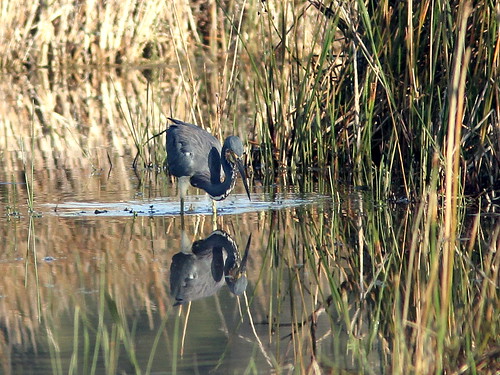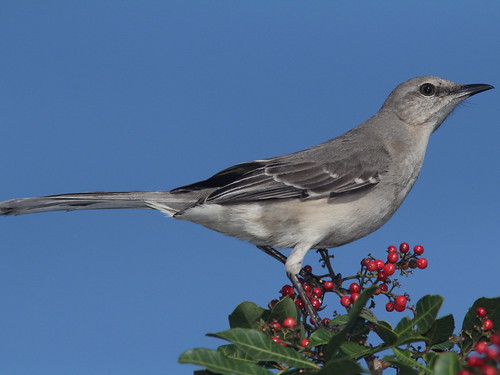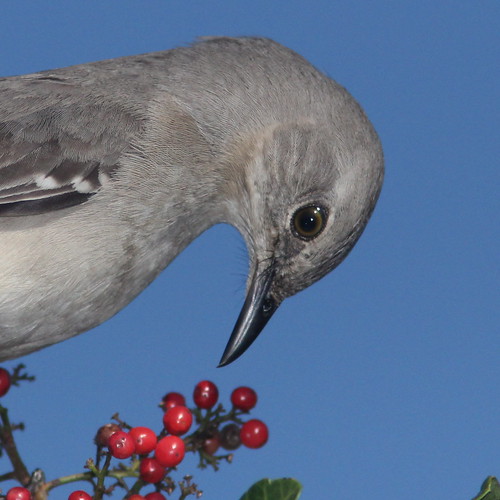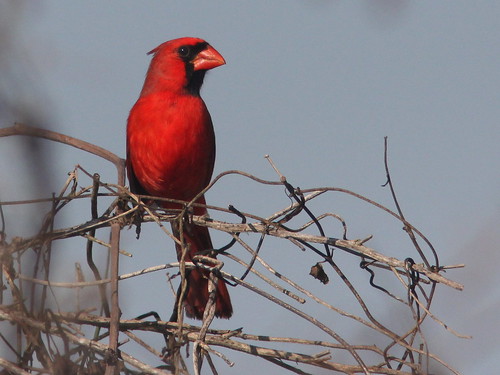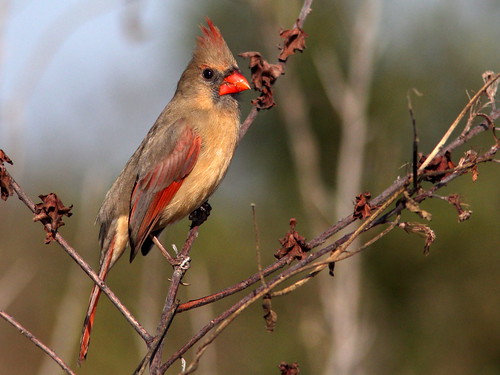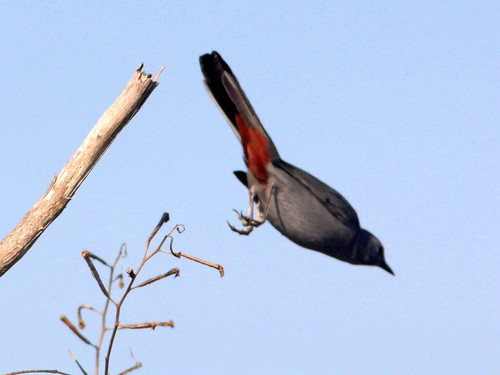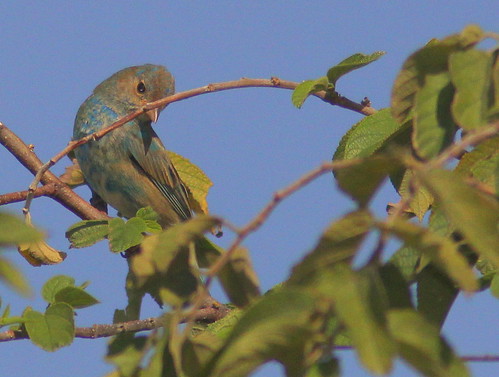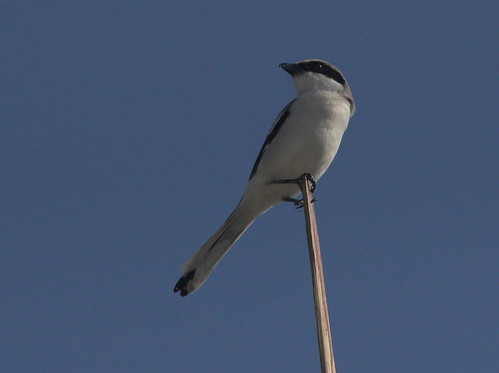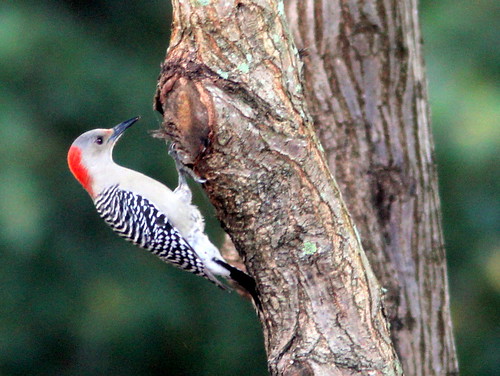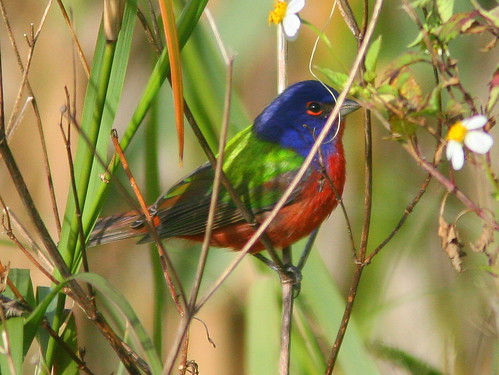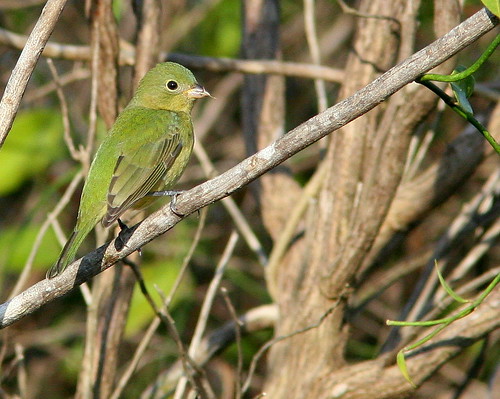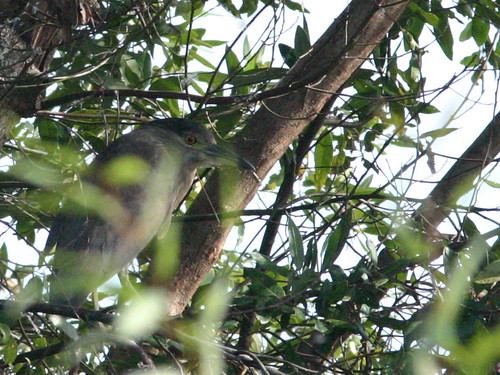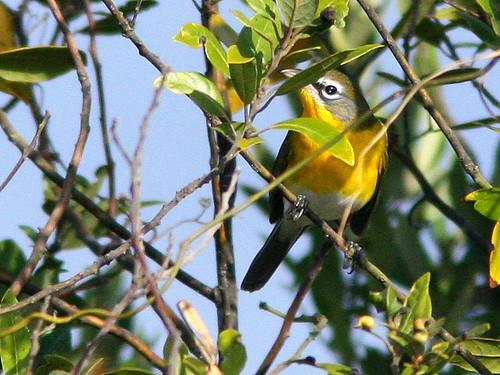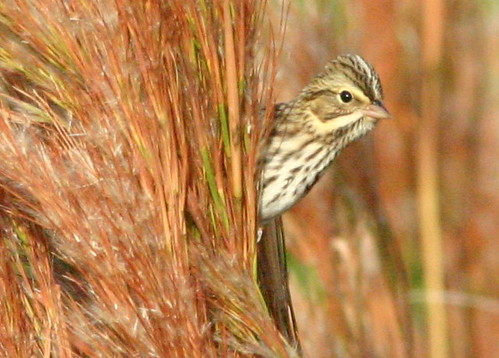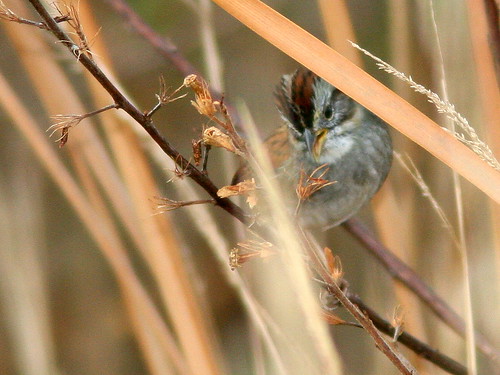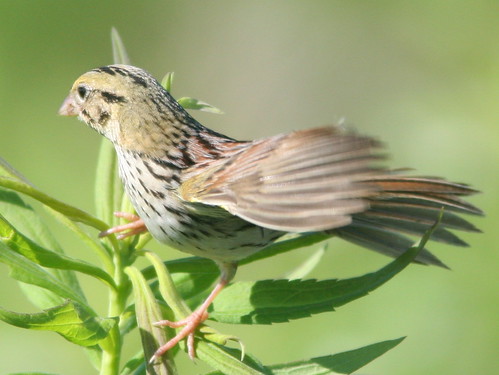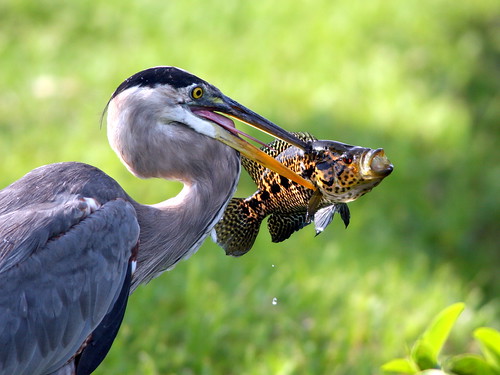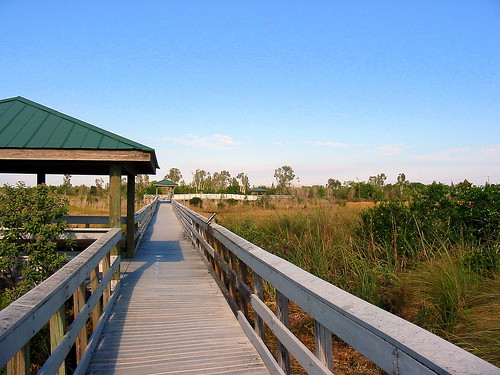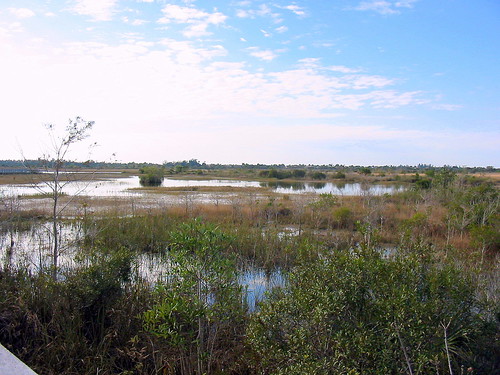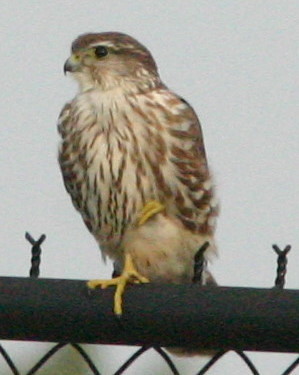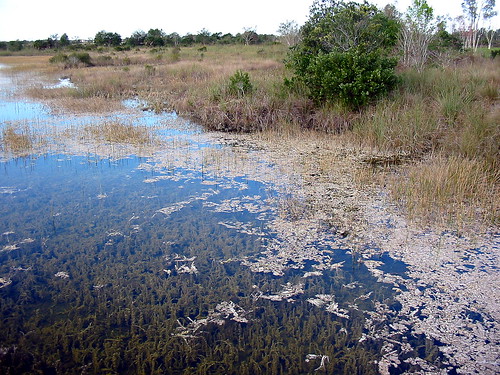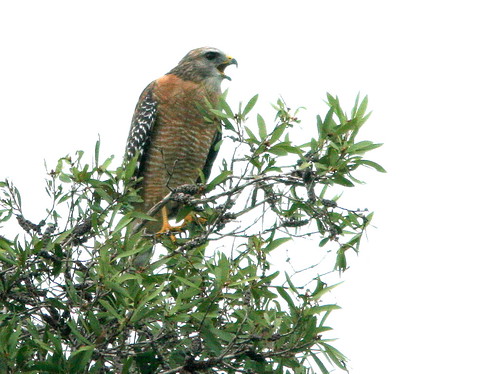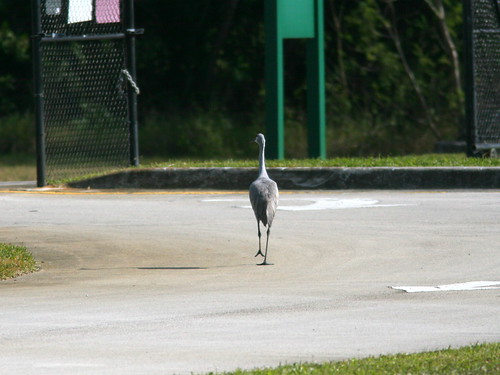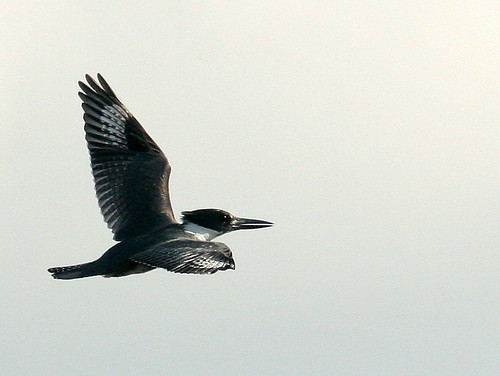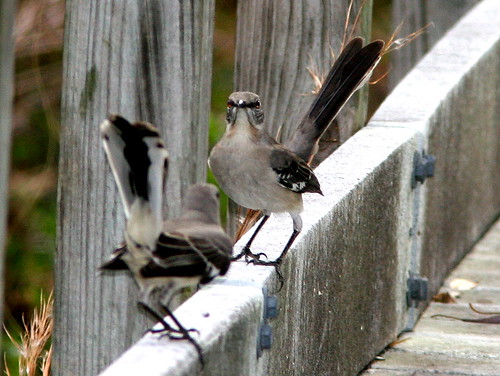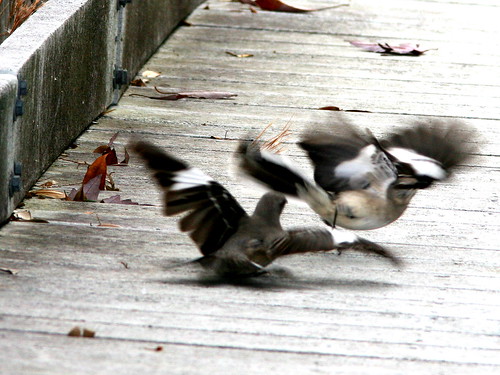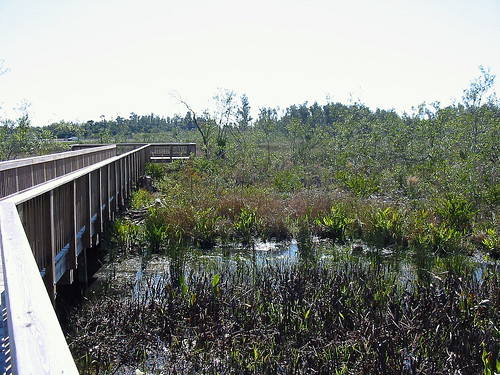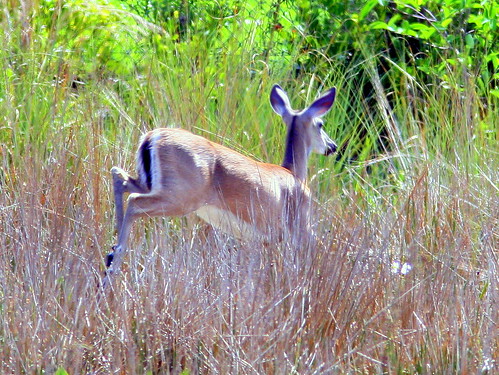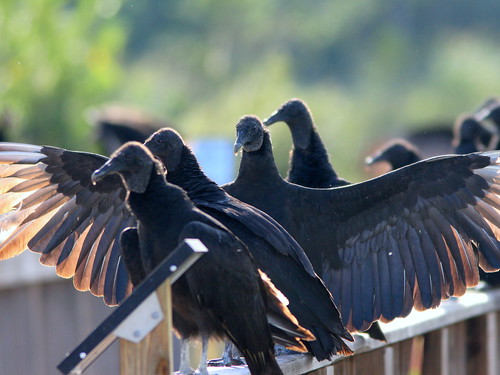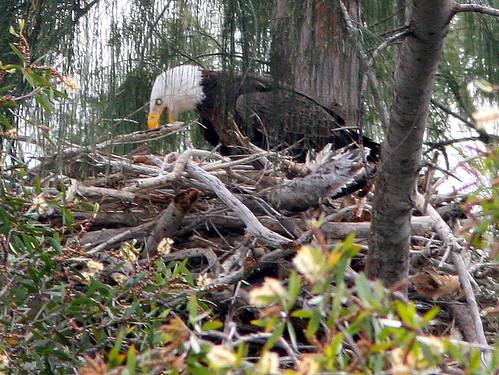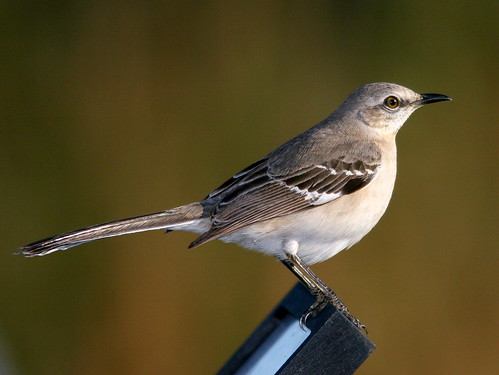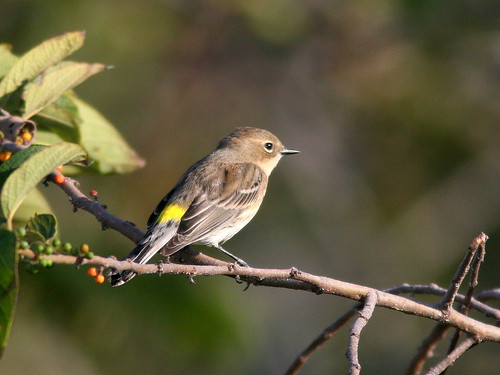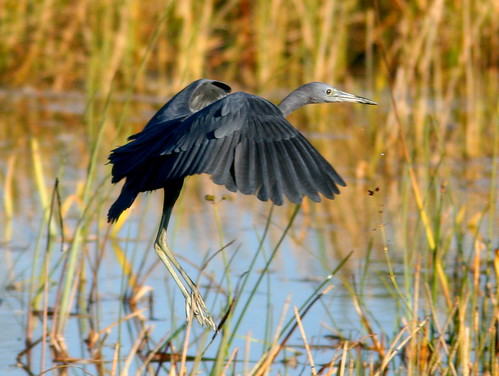Posted by: Ken @ 2:20 pm
I’ve been testing out my new Canon 60D camera for the past week, shooting at everything that moved, and a few things that didn’t. Reading the manual for my new camera made my eyes glaze over, so after looking at the pictures that pointed out the names of various knobs and buttons, I rushed outside to give it a try.
My portrait of a Great Egret at a nearby lake turned out very nicely…
…as did this one of a feeding Tricolored Heron:
Experimenting with the new camera’s settings, I made quite a few mistakes. Thinking I could “improve” upon the reflections in these shots by deepening the field of focus, I inadvertently set the exposure compensation while believing it was the aperture. Unbeknown to me, I had run it off the scale at -5, so the rest of my photos that morning turned out nearly black. I was able to rescue a few test shots by post-processing with Picasa ('’Poor Man’s Photoshop”). This degraded the images, but I hated to just throw these few away (all those mega pixels going to waste!).
The first blacked-out shot was of a Northern Mockingbird that settled quite close to me in my “hiding place” at a pothole in the wetlands near my home:
A cropped image of the same bird emphasized its eye, and despite all the processing, retained pretty good feather detail:
A male Northern Cardinal stood out against the sky:
Like the other photos above, my shot of the female cardinal was probably salvageable because of the brightness of the sky:
Emerging from the murky darkness of the computer screen, a Gray Catbird posed nicely…
…then dove away, revealing its reddish under-tail coverts:
Most of my photos were beyond help, but this spoiled image of a male Indigo Bunting in winter plumage was worth saving, if only for the lovely turn of his head:
My final shot in this bad batch was a Loggerhead Shrike that was perching atop a palm tree in our front yard as I arrived home:
Settings were restored to normal following a more in-depth perusal of the camera manual. I resolved to always check the following before setting out on my next photo safari: ISO (400), Auto-Focus (ON: 1-shot; 3 m to infinity), Aperture Priority (SET: f/5.6), Metering (Center-point), Focus Point (single center), Image Stabilization (ON), and most important after this experience, Exposure Level (mid-point). Hmm… did I forget anything? The next test shots were more satisfactory.
A Red-bellied Woodpecker appeared in a tree across the street from our home:
Not to be overlooked were a long-winged Julia heliconian…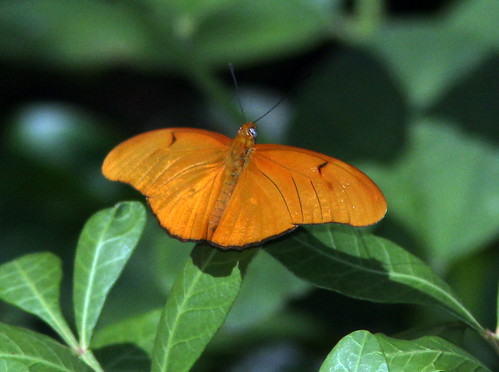
Posted by: Ken @ 6:14 pm
A quick turnaround gave me this “butt shot” of a drab Palm Warbler, revealing bright yellow undertail coverts:
While I am thrilled to capture a “guide book” photo of a bird, whether a full side-on image, free of shadows and intervening twigs, or a flight shot that shows the details of all the feather groups, I have to admit that I find perverse enjoyment in photographing birds when they’re being just… well, birds.
A white heron visited our lawn and did not look quite right for an egret. It did not have the “golden slippers” characteristic of a Snowy Egret. Sure enough, its dark-tipped bill and uniformly dusky greenish legs gave away its identity– but it failed to “sit” for what would have been my first decent shot of an immature Little Blue Heron:
Sparrows and other “little brown jobs are particularly challenging. While birding with a Kane (Illinois) County Audubon group at Nelson Lake, we struggled to see a Sedge Wren as it crept through the brush. Intervening twigs made clear focusing impossible. Giving up on the wren, I lingered behind as the group proceeded on, trying to photograph a nearby Swamp Sparrow.
Suddenly, the Sedge Wren appeared only about 5 feet away, filling the frame. So many times, I had tried for good shots of this species, and this was an unbelievable opportunity: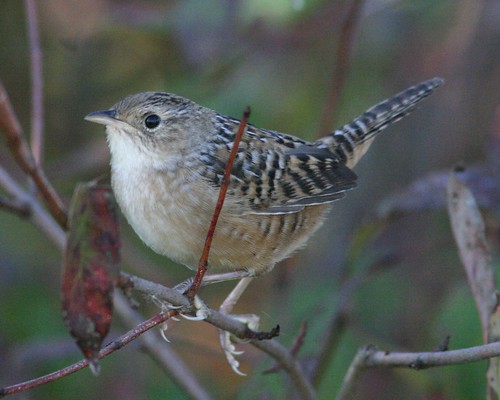
Part of the fun of birding in the field is clinching the identification of a species that comes into view for a few nanoseconds as it peers out from deep vegetation, or before it disappears into the blue. Often, I do not know whether to reach for the binoculars for a better view, or the camera, for more leisurely study in front of the computer screen. Some of my favorite photographs recall just such moments. None of them could be considered “quality” shots, or “sale-able images,” as one professional photographer friend likes to call them.
It’s easy to find Painted Buntings all winter in South Florida at established feeders, but one sighting in the wild last year was much more enjoyable. As I was seeking warblers in some shrubs that border a small grassy patch in the wetlands near our home, I saw a flash of blue and red out of the corner of my eye. A male Painted Bunting then dropped down near the ground, never to be seen again. It permitted only one quick shot, but I like this one better than those at the feeder tray.
So far, this is the first male that I have seen in the birding patch adjacent to our subdivision:
Occasionally, I will find female Painted Buntings, also beautiful, dressed all in green:
I almost walked right past this heron before I noted its form disturbing the mottled pattern of leaves against the sky. My best shot confirms that it is a Black-crowned Night-Heron, distinguished from the Yellow-crowned species by its dark cap and sharply pointed bill:
Another similar heron appeared briefly atop a small tree just before flying off, providing me with one photo to be studied at home. Its thicker bill, slim body and the smaller wing spots identified it as a Yellow-crowned Night-Heron:
Last month, I heard an unfamiliar bird call, coming from some shrubbery along the ditch that leads westward from the levee trail. Then, the leaves started stirring. I aimed the camera, hoping to catch whatever might appear. It was a Gray Catbird, partially hidden. Then a bird with some very bright yellow plumage appeared in my viewfinder next to the catbird. I snapped the shutter, having no idea of its identity. Within a second it was gone, never to be seen again.
Only after I reviewed the image on my camera’s LCD screen could I see it was a Yellow-breasted Chat, my first local sighting of the species:
The first Savannah Sparrow I photographed in Florida was likewise uncooperative, preferring the safety of a clump of grass. I love its inquisitive look:
Similarly, a Swamp Sparrow refused to come out into the open. My clearest photo shows it ignoring me to forage peacefully in its secluded perch:
In Illinois, I stalked another reclusive sparrow, the Henslow’s. When it finally emerged from its hiding place, it “spoiled” my photo by immediately darting off:
An Eastern Meadowlark “saluted” me during its portrait session:
Why don’t birds just sit still? Ask this free-falling Orange-crowned Warbler…
…or this Golden-crowned Kinglet…
…who doesn’t need a trampoline…
…or a Spiderman harness:
I’m not sure whether this Downy Woodpecker’s jump was assisted by a quick wing beat before the
shutter clicked, but it looked like an Olympian on uneven parallel bars! Should I blame this shot on shutter lag or just my slow reflexes?
Seeking perfection can be hazardous. After I scared this Anhinga up from its favorite fishing hole, it turned around and flew directly over my head for what I thought would be a perfect photo opportunity. Luckily, I saw the threat through the viewfinder and quickly moved to my right as it dive-bombed me.
The “guided missile” would have painted my left shoulder and maybe my hat!

But then, on a magical day at Shark Valley in Everglades National Park, the planets were all in proper alignment:
Posted by: Ken @ 12:57 pm
View of the Chapel Trail Nature Preserve boardwalk:
During my working days, I attended meetings or connected flights through Florida several times. Never did I think of the Sunshine State as a place to call home. Having lived in New Orleans for several years, I thought of Florida as a place even more flat, hot, humid and buggy, requiring one to become a hermit in an air-conditioned cell. Four seasons always were more appealing and interesting to me. In temperate climes it is easy to escape the cold by piling on more layers of clothing, and a fan is often enough to dispel the heat. That’s why I chose the mountains of New Mexico for our retirement home, and Mary Lou agreed (somewhat reluctantly at first, as she had trouble choosing between mountains and oceans).
When our younger daughter and her husband transferred from Puerto Rico to south Florida, we visited them several times. I had to admit that the winters there were delightful, and living in a T-shirt and shorts for most of the year was also appealing. Priorities change as the years go by, and we encountered the disadvantages of life in a large home in the mountains with limited access to essential services. We pulled up stakes and moved to Florida.
During our visits to Florida I had been following the progress of the creation of a large preserve near our new home, set to open around the time of our move. The developers of adjacent subdivisions were required by law to set aside a plot of 459 acres of wetlands to mitigate damage done to the Everglades.
The City of Pembroke Pines put much money and effort into removing exotic invasive vegetation and replanting native grasses,sedges, trees and shrubs:
When vandals started a fire, damaging the newly constructed boardwalk that spanned the wetlands, we were very disappointed that the opening had to be delayed for several months. Then, in the summer of 2005, after the park had been only open for about half a year, Hurricane Wilma destroyed much of the boardwalk. It took many more months to repair the damage before the preserve reopened.
Among the more memorable sightings during past years at Chapel Trail was this visiting Merlin, in December, 2008:
The same day we saw the Merlin, I told Mary Lou that I wanted to photograph at least one Purple Swamphen before the last one in Florida is exterminated. Purple Swamphens are native to Europe, Africa, Asia, Australia, and other Pacific islands. They were believed to have first been released intentionally by private citizens near Pembroke Pines only about 15 years ago. Despite an eradication program, they have continued to multiply and now range northward up nearly half the Florida peninsula.
When we first visited Chapel Trail three years previously, swamphens were quite abundant, but I did not acquire my first digital SLR camera until 2008. I feared it was too late to see another, as they had been easy targets for the hired hands who killed over 100 a day. In 2006 alone, 3000 were gunned down by State wildlife officers. An open hunting season is planned, though I am concerned that hunters may not always distinguish between swamphens and native gallinules. See: Trash Birds
Swamphens look something like giant Purple Gallinules. They crowd out and prey upon the eggs and nestlings of native gallinules and other marsh birds:
Cedar Waxwings on an overcast day in January, 2009: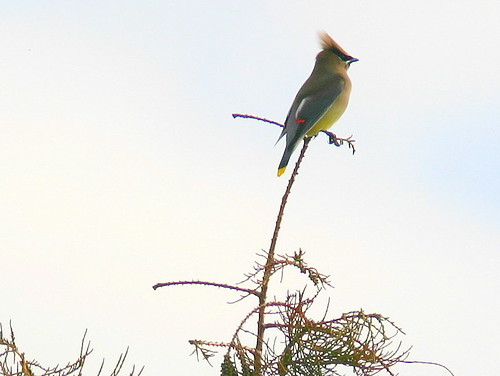
A Tricolored Heron roosts on the rail of the boardwalk in February, 2009:
Prairie Warblers spend the winter here and sometimes can be quite numerous:
In May, 2010, another Prairie Warbler provided a stunning photo-op: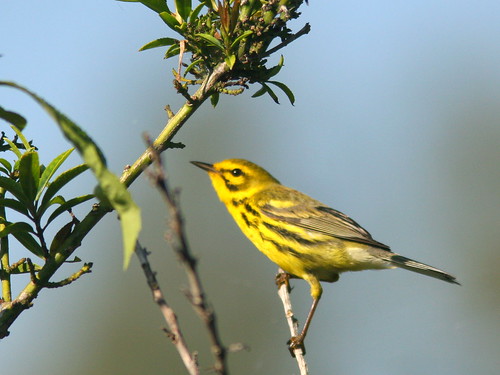
That same week, one of a pair of American Bitterns posed in the grass: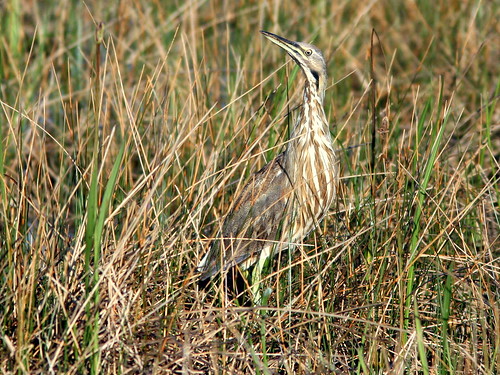
Periphyton floats to the surface in the winter. It coats submerged plants and is an important source of food for aquatic organisms. It consists of algae, cyanobacteria, and other microbes, and detritus, and its presence is a sign of a healthy Everglades ecosystem:
On a recent walk, a Northern Cardinal brightened up one very dreary day:
After a beautiful sunrise, the rains came, and we only got in a few minutes of walking the boardwalk. I had to lighten up some very dark exposures.
This Red-shouldered Hawk would not stop screaming:
This past week I captured a photo of a Red-shouldered Hawk under better lighting conditions: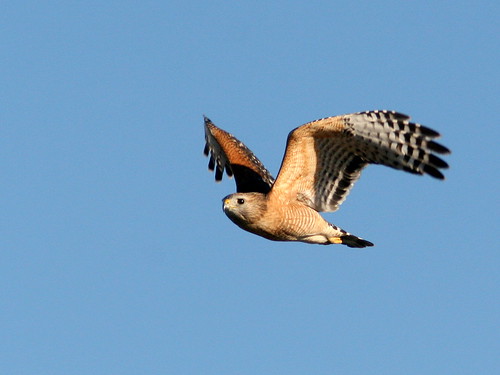
The skies opened up just after I took this photo of an Anhinga from the canoe ramp at Chapel Trail Preserve: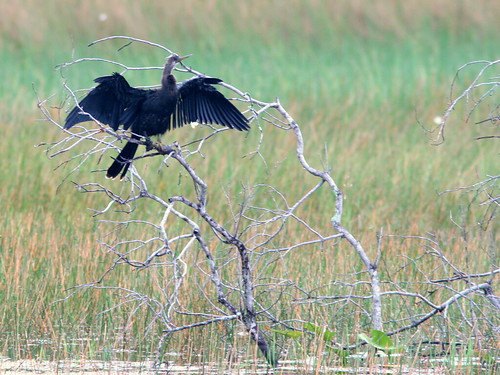
Not surprisingly, the Spiny Orb Weaver Spider, tending its web along the boardwalk, is also called the “Crab Spider:” 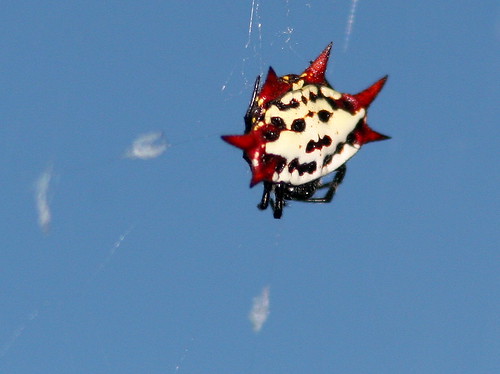
A pair of Sandhill Cranes raised one chick last year. This crane that now hangs around the parking lot may be the yearling: 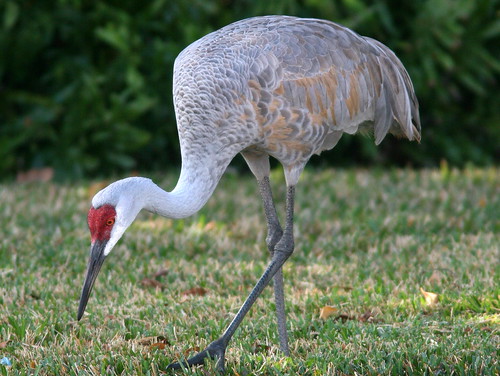
I feared for the safety of this bird! A few weeks ago, ahead of us as we exited the parking lot, the crane nonchalantly walked out the entrance and across busy Sheridan Road.
Note the straw-colored eyes of this Eastern Towhee, characteristic of the race found in Florida and southern Georgia. I have also seen the northern red-eyed variety as a migrant in South Florida: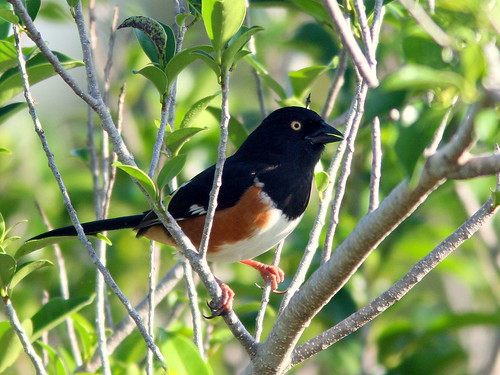
A Blue-gray Gnatcatcher in Cypress tree that is now shedding its leaves:
This Blue Jay stuffed acorns into its bill and gullet (I wonder how many):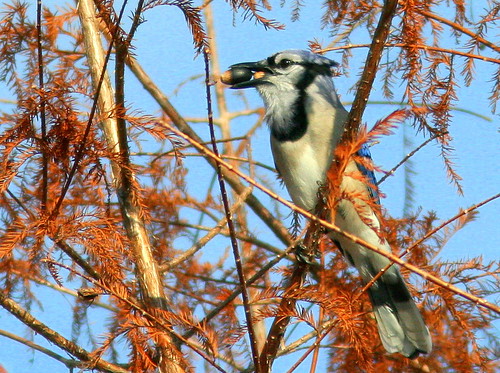
A lowly Common Grackle, “singing” near the boardwalk entrance, is beautifully iridescent: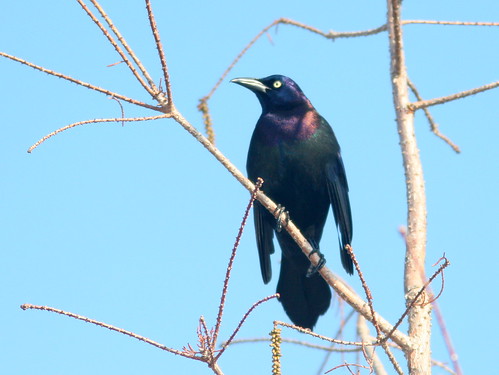
I was lucky to catch a wintering Belted Kingfisher in flight:
The male kingfisher, less colorful than his red-white-and-blue mate, settled down in a nearby tree: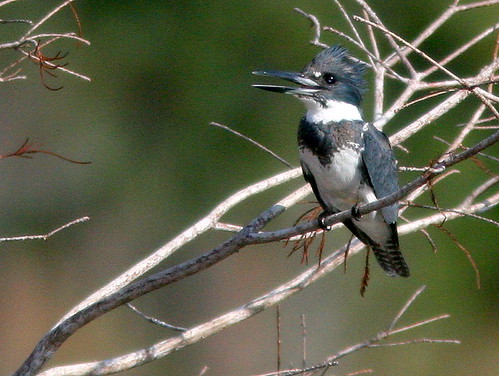
Two Northern Mockingbirds sparred on the boardwalk:
Neither would back down:
They finally came to blows:
Posted by: Ken @ 3:57 pm
“West Pines Soccer Park and Nature Preserve” sounds like a contradiction in terms, akin to “Joe’s Barber Shop and Fine Dining.” Located near our Florida home in neighboring Pembroke Pines, its extensive soccer fields share a border with a fragmented Water Conservation Area. Suburban housing nearly envelops the entire complex, yet it is an unexpected little patch of protected natural habitat.
The presence of cattails indicates that the water has been fertilized by agricultural and residential runoff. The native Sawgrass evolved in the nutrient-poor Everglades ecosystem, and it struggles to compete with invasive plants when the substrate is artificially enriched with phosphorus and nitrogen. The Water Conservation Area weakly imitates the historic Everglades hydrological cycle, swelling with rainwater during the summer and gradually drying out with the approach of winter.
A short boardwalk leads into the wetlands and one of two wildlife viewing platforms:
During past visits to this convenient oasis, we have been startled by deer, …
…surrounded by smelly vultures, …
…and dazzled by the beauty of a blooming Swamp Lily: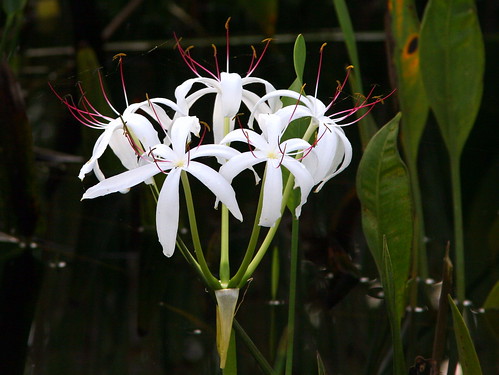
This photo of a Great Egret,”spoiled” when a Snowy Egret walked in front of my subject, turned out to be one of my favorites: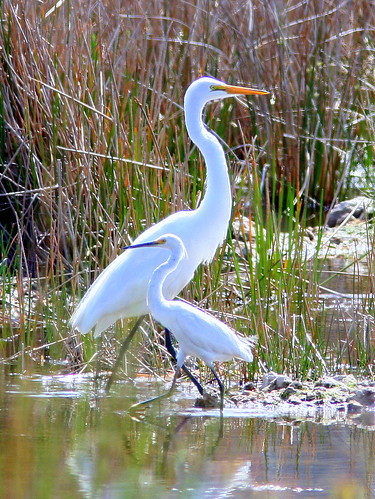
Christopher Cudworth, an Illinois neighbor, provided benchmarks that can help us evaluate and better appreciate our encounters with nature. You will enjoy reading his reflective essay, “Five Life Lessons You Can Learn from Birding (Birdwatching),” subtitled “Birding Can Be an Instrument of Learning, Joy and Humility.”
Each experience, whether in a faraway wild place or a back yard, teaches us one or more of these lessons:
Discovering a sense of wonder
Finding ways to share the joy
Maintaining a sense of humility
Building on your experience
Last week, we checked on the welfare of the incubating Bald Eagle near our home. When we arrived at the nest, it appeared empty, but we soon learned that an adult was sitting very low, incubating the eggs that had been deposited about a week before. Within minutes, the female flew in to exchange incubation duties.
The absence of spots on her tail distinguishes the female of this pair from the male: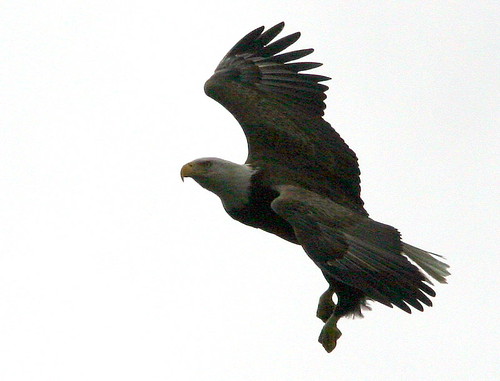
The pair called to each other as the female made a pass in front of the nest tree. As soon as she landed on the rim of the nest, the male flew off. The female peered down into the nest, possibly rearranging nest materials or turning the eggs.
She then settled down to continue incubating:
Afterward, we stopped by the Soccer Park and Nature Preserve, just down the road from the eagle nest.
A Northern Mockingbird posed on an interpretive sign. A bird may not be rare or colorful, but can still be beautiful:
There were flocks of Yellow-rumped (Myrtle) Warblers:
A Red-bellied Woodpecker probed the recesses of a long-dead Melaleuca snag: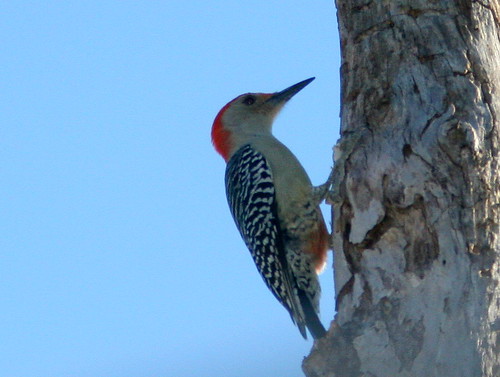
We witnessed an interesting inter-generational conflict between two Little Blue Herons. When we arrived at the observation platform, we saw a dark blue adult heron fishing peacefully in an area of shallow. open water.
An immature Little Blue Heron, distinguished from the egrets by its greenish legs and black-tipped gray bill, suddenly flew in and landed quite near the adult bird:
The adult Little Blue immediately moved over to chase it away:
The young bird held its ground as both spread their wings in an aggressive display: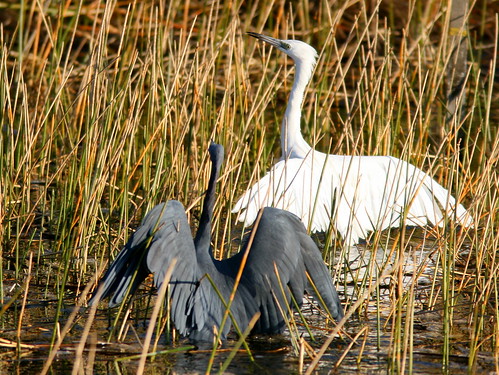
Finally, the adult made good on its threat, and chased after the younger white bird, eventually catching up with it and tussling in the grass:

Back home, I saw a Cattle Egret on our back patio and photographed it through the window glass: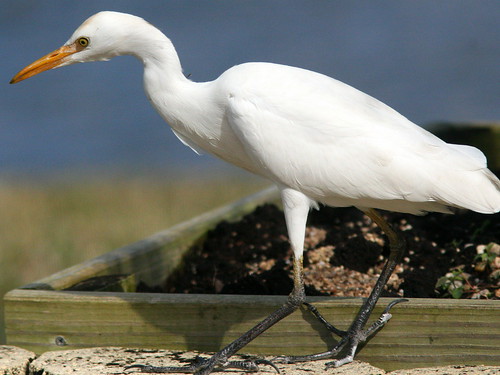
The egret was hunting for lizards hiding in the Aloe Vera:
Later, a Loggerhead Shrike perched on a lawn chair on our back patio:
I captured this image from inside the house, as it too chased after anoles along the low wall: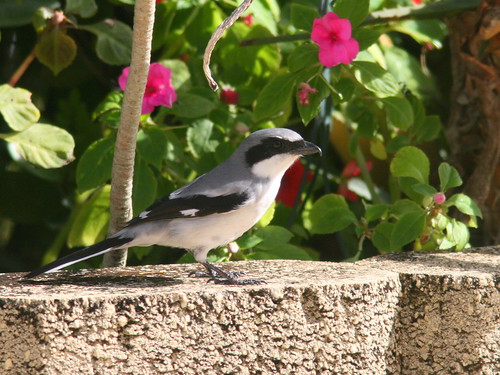
Click here for a slide show of some of the wildlife I have seen at the soccer park.














